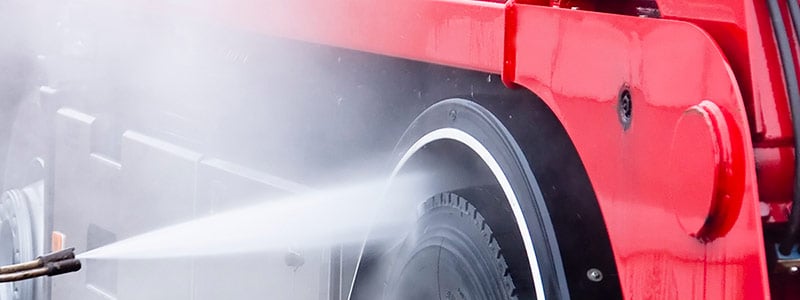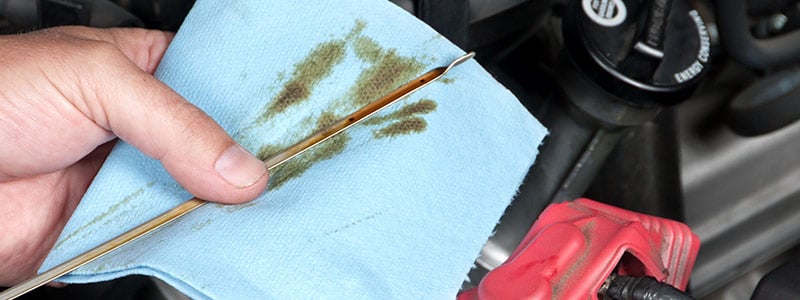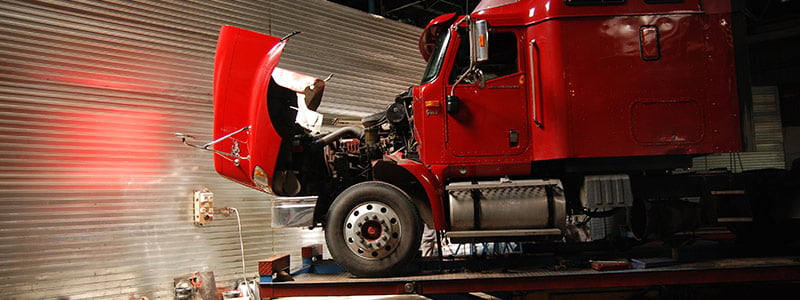Winter is here, but many parts of the United States already have seen wintry conditions, in some cases for months. But even if winter’s cold, ice and snow already have made an appearance in your area, it’s not too late to take some precautionary steps to prepare your fleet for the winter months ahead.
Whether your shop is in a northern climate like Rochester, New York, which averages nearly 100 inches of snow per year, or further south where snow isn’t even a certainty, it’s well worth a small investment of time and money to winterize your fleet.
Whether your shop is in a northern climate like Rochester, New York, which averages nearly 100 inches of snow per year, or further south where snow isn’t even a certainty, it’s well worth a small investment of time and money to winterize your fleet.
Here are some simple steps to consider:

Clean Exterior
Keeping vehicles clean is a good idea year-round, but particularly so in the winter. A thorough wash and wax before winter starts will be a major help in keeping things clean through the season. Of course, regular washes later in the season will help on that front, too.

Check Fluids
Several vehicle fluids take on even more importance in cold, messy conditions. The simplest on this list is windshield washer fluid. Having enough on board when you need your windshield cleared of dirt, mud, salt and other winter obstructions is vital for safe operation, so be sure to keep the reservoir topped off as needed. For added protection, you could use windshield washer antifreeze for sub-zero conditions.
The same advice applies to fluids like antifreeze and brake and power steering fluid, all of which should be kept full and flushed as needed.
For antifreeze, be sure to follow the instructions, as most require adding a certain percentage of water in most cases. Although water alone can work in an emergency, antifreeze will provide much better protection against engines freezing in cold weather.
Power steering fluid is unlikely to freeze, but it will get thick and provide reduced performance if temperatures dip far below zero. Allowing the vehicle to warm up and ensuring the reservoir is full will help.
Of course, don’t forget motor oil. Check your owner’s manual for the recommended cold-weather oil for your vehicles and follow that recommendation for best winter results. You also might want to consider switching to a synthetic oil for improved engine starting in frigid conditions.
Finally, think about your fuel, especially if your vehicle runs on diesel. Chilly weather can lead to rough operation or even engine failure if you don’t use a winter blend that’s right for your engine. A block heater can be a worthwhile investment for diesel engines to ensure they start when temperatures plummet.
Also, whatever fuel you use, keeping the tank at least half full can help prevent condensation and reduce the risk of water freezing in the fuel line.

Perform Preventative Maintenance
Preventative maintenance is essential for reliable fleet operation year-round, but it’s especially key in wintry weather when many types of problems are more likely to come to a head and breakdowns can be especially problematic or even dangerous.
If winter brings your fleet a lot of snow and ice, investing in winter tires can help improve performance and avoid crashes. In addition, regardless of what type of tires you use, check for proper inflation regularly.
Your vehicles’ braking system also needs to be a focus for winter safety. If there’s any squealing when you brake, it might be time for replacement. Plus, don’t forget air dryer maintenance in vehicles that have them.
Wiper blades tend to be forgotten until they cause a problem, which can be a disaster in winter. Be sure to give them a look before the season and replace as needed.
Wiper blades help make sure your driver can see others, but exterior lights help on that front and with others seeing your vehicle. Check for any burnt-out or broken lights and replace right away.
Belts and hoses are another area to check, as they can undergo increased stress in the winter, leading to failure.
Similarly, your battery and spark plugs are more prone to failure in the cold, so it’s definitely worth the time to inspect them and replace at the first sign of trouble. Regular cleaning will do wonders, as well.
Vehicles’ heating systems also take center stage in winter, with a properly functioning defroster being especially important for safe operations.
Being proactive with regular inspections and fixing any problems found helps keep your fleet on the road and your people safe.

Install Emergency Kits
Finally, excellent preparation doesn’t mean your fleet vehicles won’t break down in winter. For that reason, you should stock an emergency kit in each vehicle just in case.
AAA recommends the following items in a winter emergency road kit:
- Drinking water
- First-aid kit
- Non-perishable snacks for both human and pet passengers
- Bag of abrasive material (sand, salt, cat litter) or traction mats
- Snow shovel
- Blankets
- Extra warm clothing (gloves, hats, scarves)
- Flashlight with extra batteries
- Window washer solvent
- Ice scraper with brush
- Cloth or roll of paper towels
- Jumper cables
- Warning devices (flares or triangles)
- Basic toolkit (screwdrivers, pliers, adjustable wrench)
If you’re looking for a partner to help make sure your shop has supplies when and where they’re needed,

.png?width=131&height=58&name=image%20(40).png)